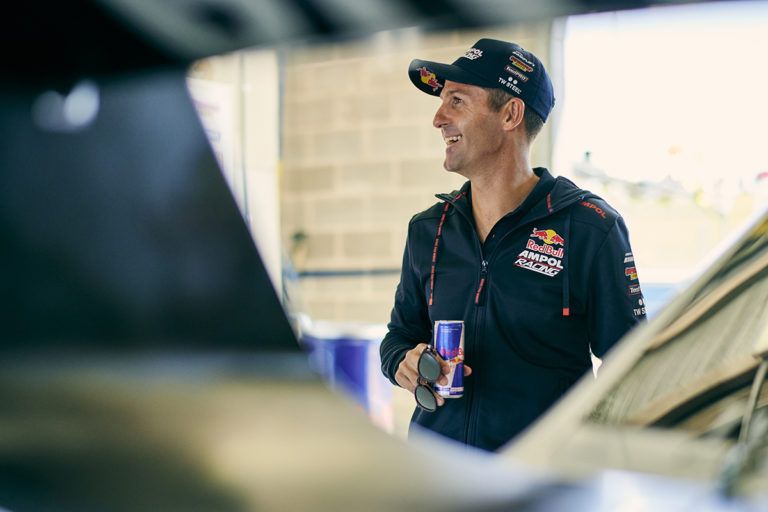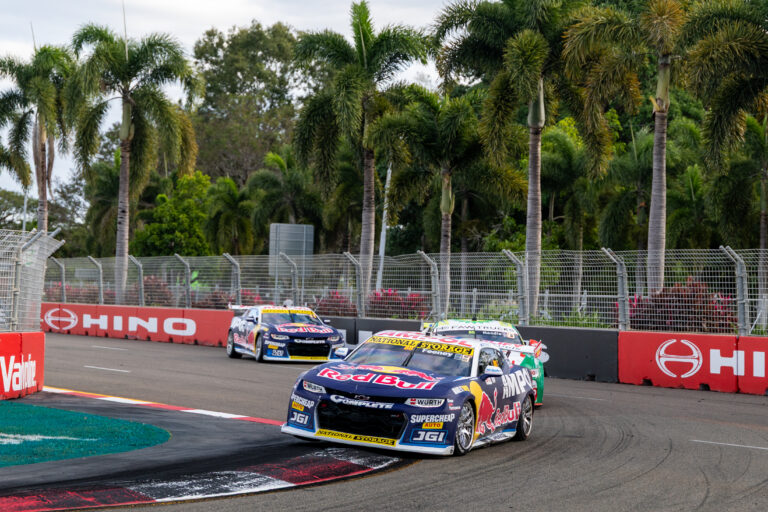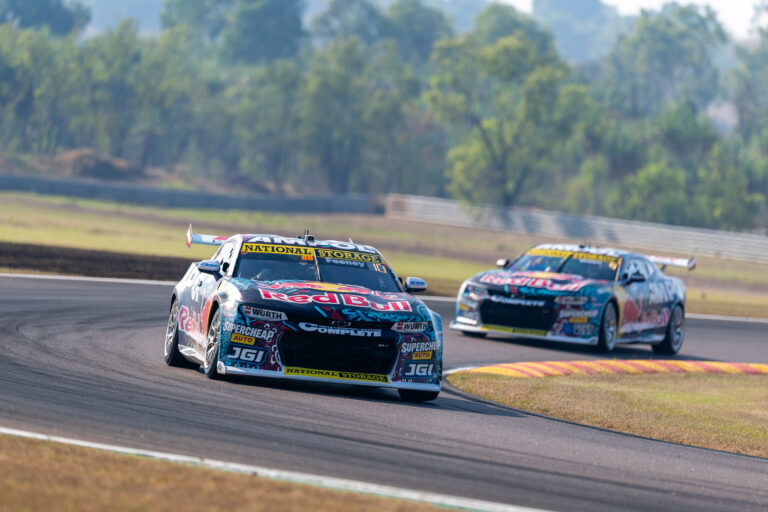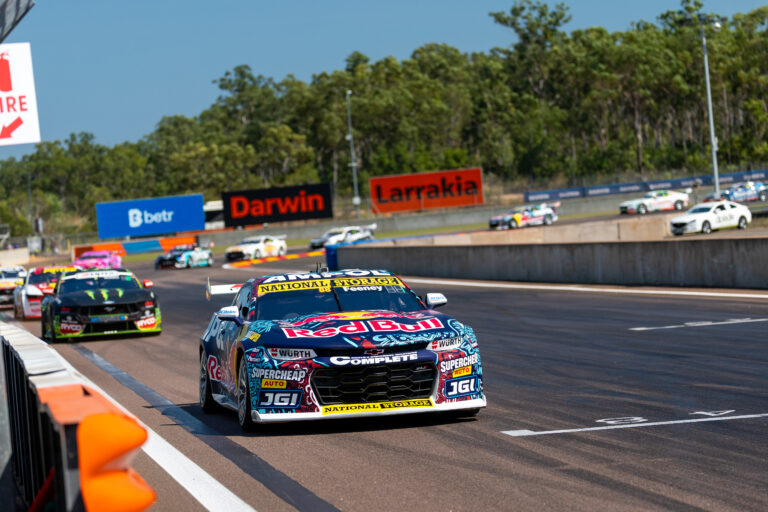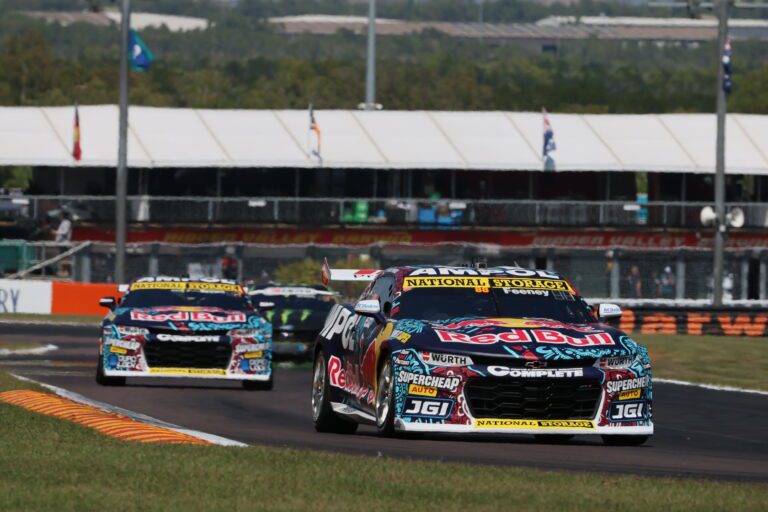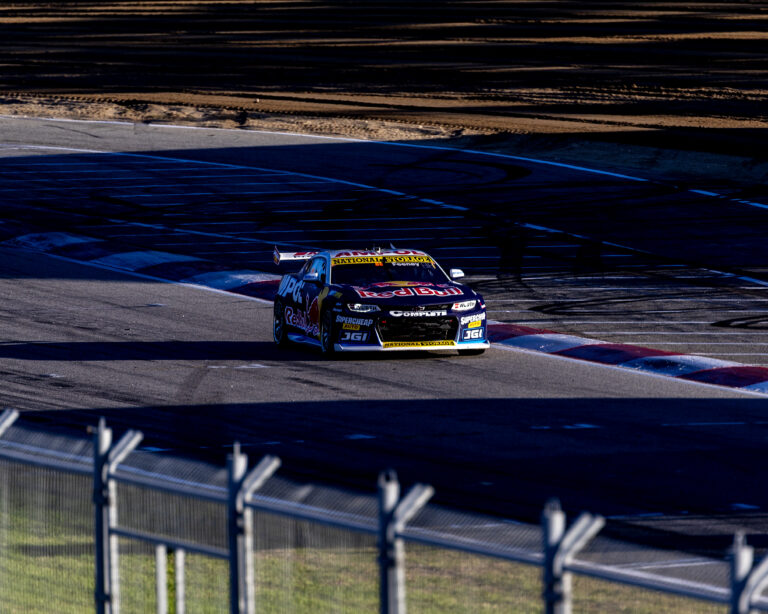As we fast approach next week’s Sydney Motor Sports Park round of the V8 Supercar Championship, we thought we’d use last year’s race there (which was incredibly wet) to look at just what it takes to prepare for a watery V8 Supercar race. You may think it’s as simple as slapping on a set of wet tyres and hitting the track, but as you’ll see below from Car #1 mechanic, Kris Goos and Car #1 Driver, Jamie Whincup, there’s a fair bit more to it. Will it be a wet round again this year? We’ll leave that to the Ubimet weather guys to predict, but you can be assured that if it is, our Bulls will be ready to charge.

JAMIE WHINCUP – DRIVER
RBRA: Coming into what you know is going to be a wet race, does your mindset change at all?
JW: My mindset coming into any race is how can I get my car to the finish line ahead of everyone else and a big part of that is how I drive the car. Maximising a lap in the wet requires a completely different style than the dry, so I would have to say, yes, my mindset does change a lot depending on the conditions.
Would you prefer an out-and-out wet race, or one of those races where it’s partly wet, partly dry?
I would definitely prefer a full wet race rather than an intermediate scenario. Intermediate conditions are by far the hardest conditions a racing driver will face. The racing line (which is dry) has a heap of grip therefore allows the car to go fast around the corners. If the driver make a very small mistake and runs a few centimetres wide on a corner it will then force him/her onto the wet track then the wet grass andl most certainly into the gravel trap or wall.
We’ve spoken with your mechanic below about car prep, but is there anything specific you do for a wet one? Different suit, helmet, vision?
The biggest thing to help the driver in wet conditions is to make sure the car is sealed well so no water gets on the pedals. Wet pedals can cause the driver to slip and slipping of the brake pedal is never good.
How much of a difference do the wet tyres make?
What we call a wet tyre in V8 Supercars is actually a grooved dry tyre which makes it an intermediate tyre. We will race on the intermediate tyre when the track is wet but if it rains really hard and there is standing water on the circuit, it will most likely be red flagged and/or called off.
KRIS GOOS – MECHANIC
RBRA: When it’s a really wet race (Like SMSP last year) is there anything you need to do before the car goes out to prepare the car?
KG: When a wet race is inevitable, we start with double checking the interior of the car is sealed. The cabin is hot and does not have awesome air circulation, so if moisture is present it’s a perfect breeding ground for fog. To remedy this anti-fog is applied to all the internal window surfaces. Next we give all the suspension and steering arms a good spray and lubricate where possible to prevent rust. Finally we redirect/blank some ducts that are pointed at the driver so they don’t get wet. A wet and slippery shoe can only end in trouble! And that isn’t cool.
Are the cars pretty good at handling driving and racing in those kind of conditions or does it play havoc with the electrics etc?
The cars are pretty good at handling the wet conditions, although every now and then moisture enters an electrical plug that a month down the track rears its ugly head, causing dramas in anything from a starter motor to a sensor. (the engineers love it when this happens!)
What about cleaning them after? It must get dirty in every little nook and cranny imaginable… is it a mission to clean post event?
You would think cleaning the car after the rain would be the worst thing and it is if the car goes off in the mud, but more serious is the maintenance of all the bearings etc. This blows out the service time and on a three-day turn around really tests your tenacity.
Is it harder on any specific components in the car when it’s really wet like that?
Wet/dry races are especially hard on the wiper system. After a wet/dry race the wiper shaft is removed and crack tested, a wiper motor has as much torque as Red Bull has energy, so a poor shaft could sheer off.
It must make the pit stops a little more interesting when it’s sheeting rain?
When doing a pit-stop in the wet all you can do is laugh in the face of adversity, it’s wet, windy, slippery and cold. Then again, there is no better feeling then stepping up in those high pressure situations.
The Red Bull Racing Australia VF Holden Commodores will be in action at the Sydney Motorsport Park from August 21 – 23. Tickets at Ticketek.


